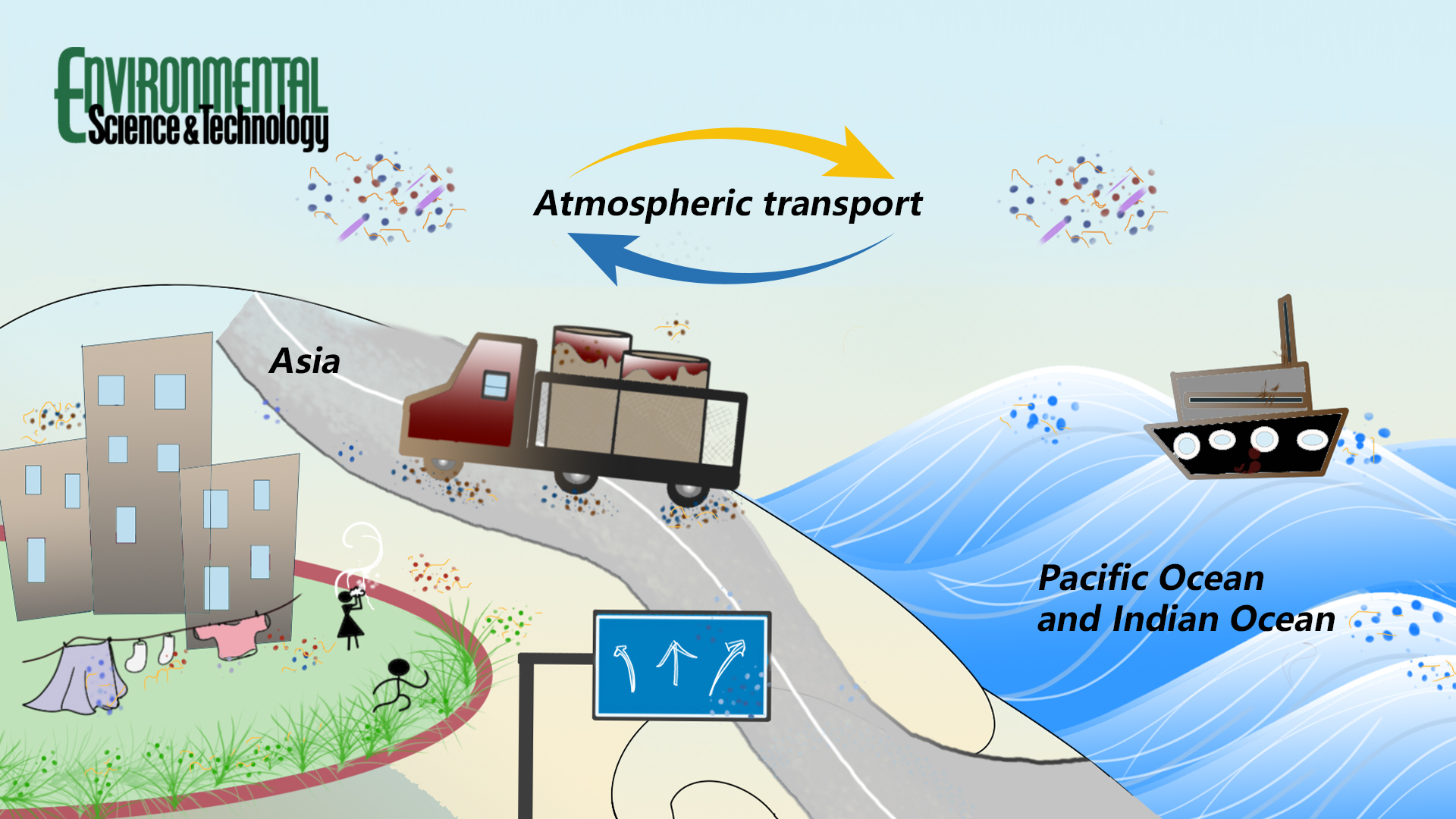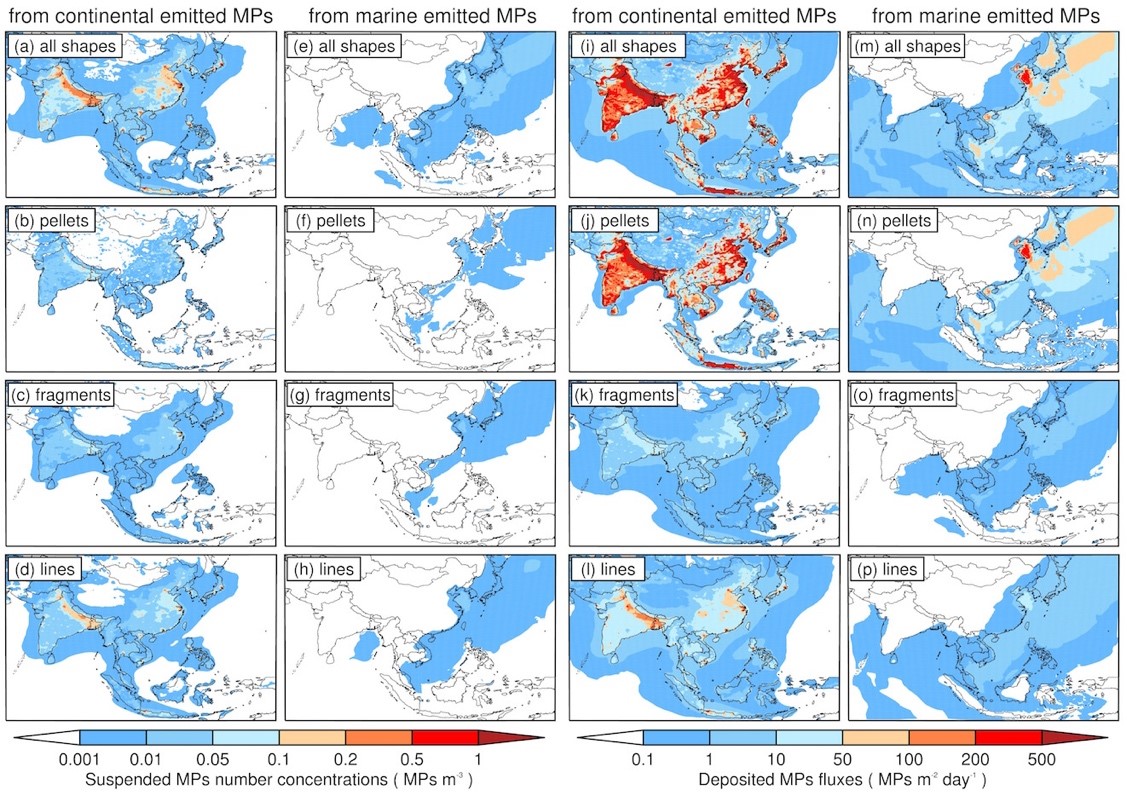Researchers demonstrate efficient atmospheric transport of microplastics over Asia and adjacent oceans
Microplastics (MPs) are small plastic particles<5 mm in size. The rapid accumulation of MPs in the environment has become a severe problem, endangering the health of terrestrial and aquatic biotas. Recent observations at remote ecosystems indicated that MPs might be transported by the atmosphere over long distances. However, to date, the transport mechanisms of MPs in the atmosphere have not been systematically investigated. A critical complexity is that MPs are present in the environment in a wide range of sizes, shapes, and densities, all of which affect MPs’ aerodynamics.

Prof. Tzung-May Fu’s team from the Southern University of Science and Technology (SUSTech) collaborated with Hohai University and Nanjing University of Information Science and Technology (NUIST) to show the efficient atmospheric transport of microplastics over Asia and adjacent oceans.
Their research, entitled “Efficient atmospheric transport of microplastics over Asia and adjacent oceans,” was published in Environmental Science & Technology, a top journal in the field of environmental science.
Prof. Fu’s team developed a regional atmospheric transport model for MPs, accounting for MPs’ size- and shape-dependent aerodynamics. They compared simulations against observations and estimated the atmospheric MP emission from Asia and the adjacent oceans to be 310 Gg y-1 (1 Gg = 1 kton) and 60 Gg y-1, respectively.
The study showed that MP lines (fibers) and fragments experience more drag in the air and, therefore, may be transported in the atmosphere >1000 km. In contrast, MP pellets are mostly deposited near-source.

Figure 1. Tuned atmospheric emissions of MPs over Asia and its adjacent areas of the Pacific and Indian oceans for the year 2018
The researchers estimated that 1.4% of the MP mass was emitted into the Asian atmosphere and deposited into the oceans via atmospheric transport. The resulting net atmospheric transported MPs flux from Asia into the oceans was 3.9 Gg y-1, twice as large as a previous estimate for the riverine transported MP flux from Asia. The study highlighted the impacts of size and morphology on the aerodynamics of MPs, and the importance of atmospheric transport in the source-to-sink relationship of global MP pollution.

Figure 2. Simulated annual mean surface concentrations of suspended and deposited atmospheric MPs from continental and marine sources
Xin Long, a Ph.D. researcher at SUSTech, is the first author of this study. Prof. Tzung-May Fu at SUSTech is the corresponding author.
This work was supported by the National Natural Science Foundation of China (NSFC), the Basic and Applied Basic Research Foundation of Guangdong Province, and the Shenzhen Science and Technology Innovation Commission. Computational resources were provided by the Center for Computational Science and Engineering at SUSTech.
Paper link: https://pubs.acs.org/doi/10.1021/acs.est.1c07825
